

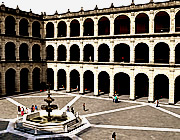
Life and progress in post-conquest Mexico City revolve around the immense Zocalo with its colonial buildings and busy streets - a vibrant, colourful city.
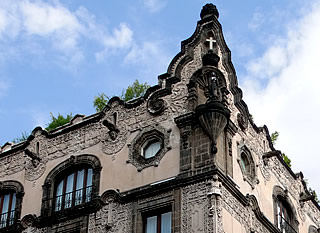
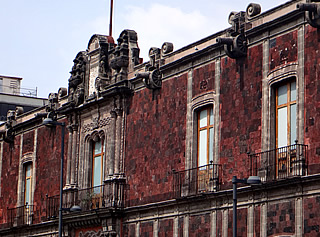
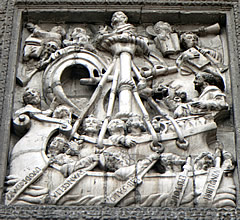
An 11 hour flight from London but World Traveller Plus makes this a lot more comfortable. Very quickly through immigration and our guide José (Pepe) was there to meet us. Getting out of the terminal to the car we could immediately smell the sewers - there are problems because the city is sinking. Depending on how you define the city boundary, there are 20-30 million people living in the city.
Pepe took us to our hotel, the Hampton Inn & Suites in the city, very close to the centre. By 9 we were in bed.
When the Spanish first came early in the sixteenth century, Tenochtitlan, the Aztec city precursor to Mexico City, was magnificent, with a population estimated to be at least 200,000, ruled over by Moctezuma II.1
Legend has it that a past ruler of the Toltecs, the people who preceded the Mexica, was banished across the sea. He was thought to be the god Quetzalcoatl in human form and was prophesied to return some time in the future. It is said that Moctezuma believed Cortes was the returning Quetzalcoatl.
When they arrived Hernan Cortes and his entourage of Spanish invaders were amazed by the imposing colourful stone temples of Tenochtitlan, their steps no doubt stained with blood, palaces, ball courts, market places and canals. The city showed obvious signs of planned development, having been laid out in a grid crossed by canals on which canoes traversed the city.


At first sight Mexico City today is Spanish colonial in its monumental buildings, but the buildings of the zocalo were built right over the Sacred Precinct of Tenochtitlan, and nearby the still-impressive remains of the Aztec city, the Templo Major, can be visited. There is even an excavated "pyramid" at one of the metro stations "Pino Suarez". Better described as an altar, it is round in cross-section as is usual for structures dedicated to Ehecatl, the Aztec god of the wind.

Less inspiring remains of Tlatelolco, founded at around the same time as Tenochtitlan in the middle of the fourteenth century, are located north of the city centre. At one time quite a substantial city itself, by the time of the conquest it had been taken over by Tenochtitlan and was mostly a large Aztec market place.
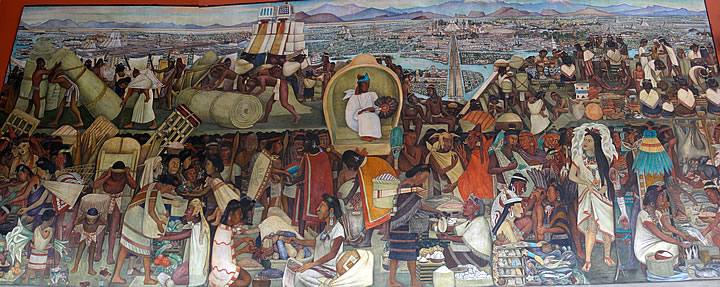
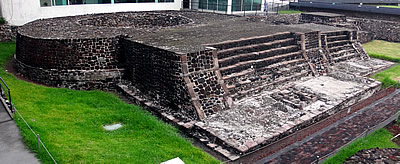
Lower levels of a palace and several temples can be seen. The double pyramid is quite unusual being two pyramids directly adjacent to each other, dedicated to Tlaloc and Huitzilopotchli - the rain god Tlaloc, and the primary Aztec god of war, Huitzilopotchli, also patron god of the city, who in legend had guided the Aztecs to the site in the great lake to found Tenochtitlan.
We were unable to visit what sounds like the most interesting part of the site, I'm not even sure they are open to the public. A water box was discovered beneath the adjacent church which acted as a water reservoir, fed by a water system draining from Chapultepec Hill, four miles away.2 The walls of the basin were once covered with brightly coloured murals painted at the time of the conquest and meld Aztec and Colonial styles and beliefs: people fishing, jaguars, snakes, frogs - much of it seems to be water-related.

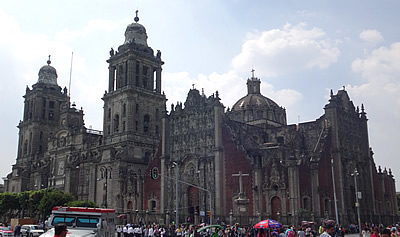
The Zocalo, standing on the old Aztec marketplace, is the heart of colonial Centro Storico of Mexico City. A vast square 220m by 240m the ruins of Templo Major of Tenochtitlan lie just to the north east.
"Zocalo" means plinth: a monument to independence was supposed to have been placed in the massive square but only the plinth was ever built. The people nicknamed the square "zocalo" and the name stuck - so much so that many towns and cities in Mexico now have their own zocalo!
In Aztec times this was the ceremonial centre of their city. The Spaniards destroyed the Aztec centre and reused much of the stone in their own buildings. Many are now sinking due to the unstable ground.
During our visit the whole of the square within these buildings was filled with huge white tents, apparently free computer lessons were being given to anyone who wanted them. There are numerous unlicensed street vendors here you make a run for it if the police make an appearance! We saw one unfortunate young woman not quite fast enough and caught.
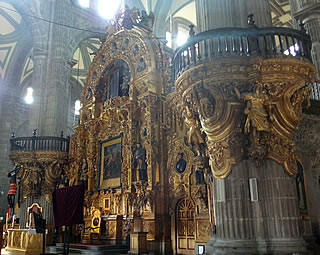
The cathedral stands on the north side of the square, the presidential palace on the east, on the site of Moctezuma's palace, government offices on the south, and stores and hotels on the west.
Being mostly Baroque I wasn't too keen on the cathedral. It is certainly large, and lavishly decorated. There is a statue of a crucified black Christ inside which is the source of an enduring legend. The story (or a version of it!) goes that the Spanish Inquisition brought condemned prisoners to the altar here to confess before they were killed. A priest who preached against the practices of the Inquisition used to come to the Christ to pray, always kissing the feet before departing. An enemy painted the feet with poison in an attempt to kill him, but when the priest next went to kiss Christ's feet they moved away. repeating the process it happened again and after a third attempt with the same result the poisoner confessed to the miracle he had seen. The poison is said to have turned the statue black.

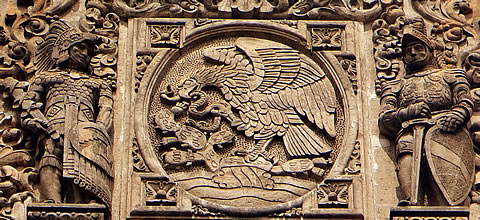
The Palacio Nacional on the east side of the Zocalo was the residence of Spanish viceroys and later of the country's presidents. The walls of the interior staircase and first floor are covered with murals by Diego Rivera illustrating the history of Mexico from various pre-conquest peoples through the arrival of the Spanish to life and politics in the 1930s.
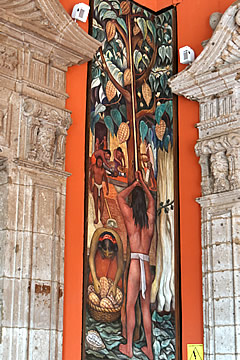
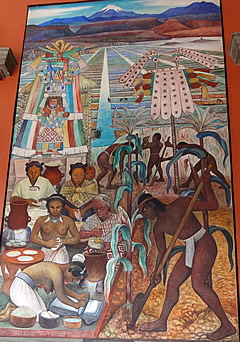
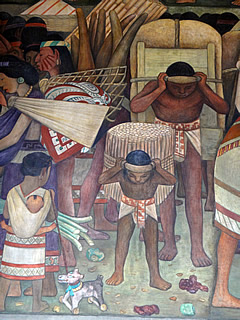
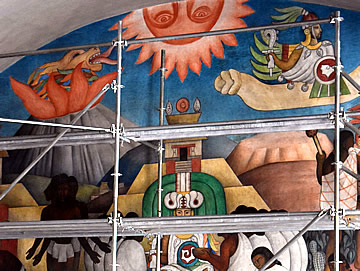
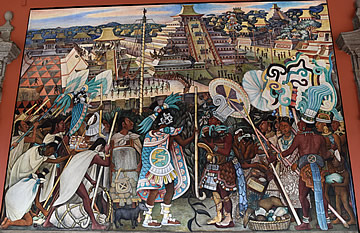
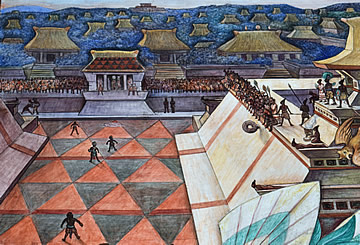
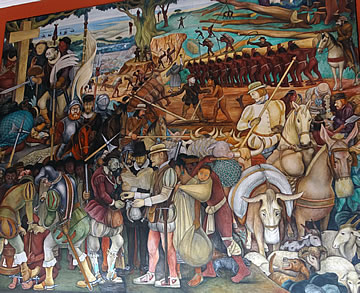
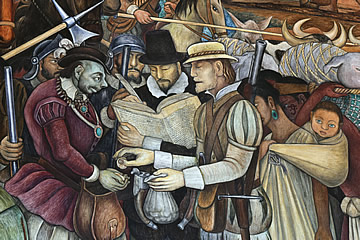
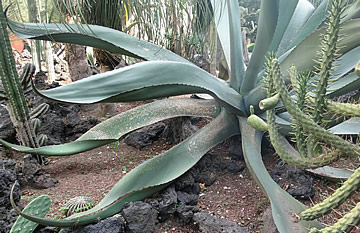
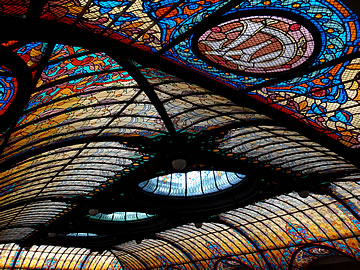
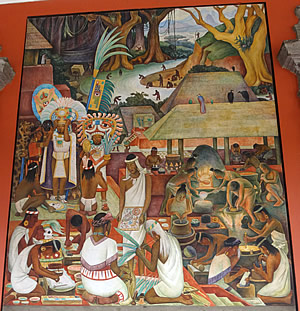
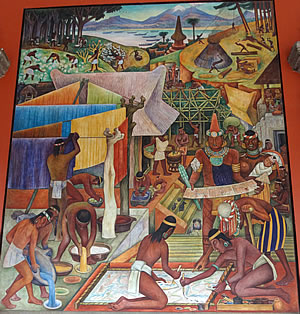
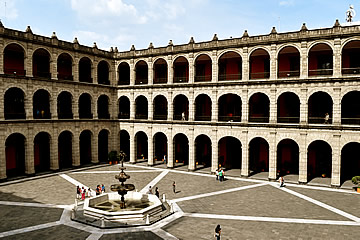
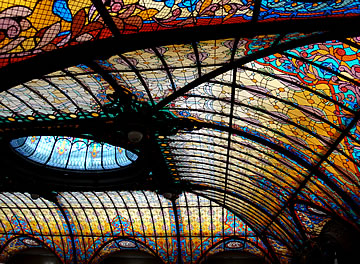
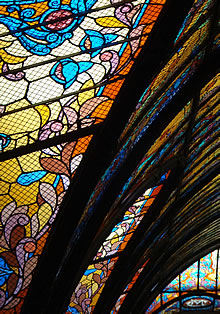
The Gran Hotel on the Zocalo is an Art Nouveau masterpiece and we went along one evening for a drink in the rooftop bar to see the magnificent stained glass ceiling.
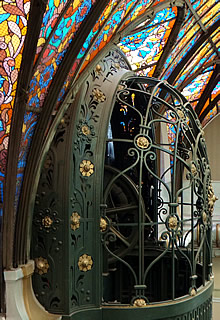
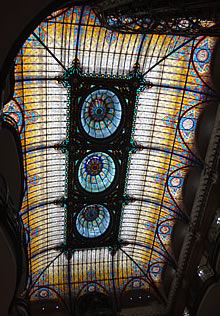
It must be one of the most impressive stained glass art nouveau ceilings in existence. The original art nouveau iron lift shaft and gates are also worth a look!
The view from the balcony over the Zocalo is also not to be missed, though the square was filled with huge white tents when we were there!
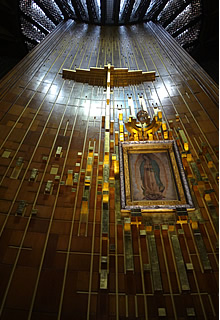
In the north of the city is the celebrated Basilica of Guadalupe - a huge modern church with its sixteenth century predecessor alongside.

The legend of the miracle which caused the original to be built goes like this (and there are variations!): a child or man saw the Virgin Mary who told him to have a church built at the site. The church authorities did not believe him until he returned with his cloak filled with roses, miraculously conjured up by the virgin in the depths of winter, when he let these fall from his cloak it was imprinted with her image.
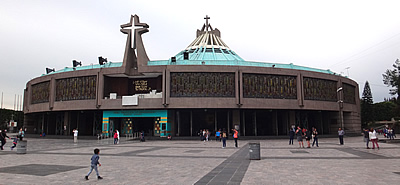
The cloak is preserved behind glass (it was subject to a bomb attack in1921 but survived unscathed) and can be viewed from highly amusing moving walkways which pass in front of it.
The plaza on which the churches stand is massive, and the buildings are visibly tilted due to the instability of the ground.
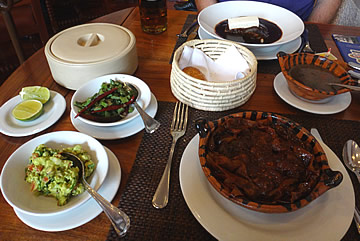
Our best meal in Mexico City was lunch at El Cardenal. It started very well with two ice cold beers in ice cold mugs, continued through a mixiote cordero - a spicy lamb dish served with guacamole and a green bean and chilli side dish for me and Cordero en Salsa Borracha for Andrew with freshly made tortillas as well as crusty bread.
We had arrived around mid-day for an early lunch but people were still eating from the breakfast menu - fairly typical for Mexico City!